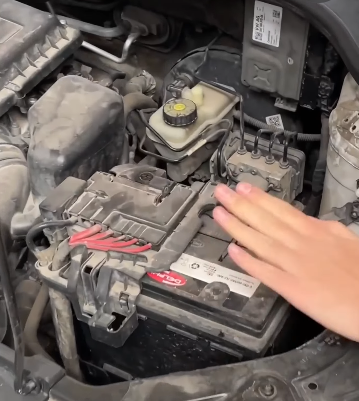
You’re driving peacefully, everything feels smooth, and then suddenly — ping! — a light pops up on your dashboard. It’s the dreaded engine fault light, also known as the check engine light. Your heart skips a beat. Is your engine about to blow? Are you stranded? Should you call a tow truck?
Hold on — before you panic or rush to a mechanic, here’s some surprising good news: in many cases, this warning light can be reset or resolved in just five seconds! Yes, you read that right. Sometimes, it’s not even a real problem — just a simple issue that can be cleared quickly.
Let’s break it all down.
What Does the Engine Fault Light Mean?
The engine fault light is your car’s way of saying, “Hey, something’s off!” This warning is triggered by the car’s onboard diagnostic system (OBD-II). The light could mean something serious like a misfiring engine, but often, it’s just a small issue — like a loose gas cap or a temporary sensor glitch.
There are two types of check engine lights:
- Steady light: A minor issue — the car is still safe to drive.
- Flashing light: A serious problem — stop driving and get it checked immediately.
In either case, it’s important to stay calm and take a logical approach.

The Common Causes Behind the Light
Before we get into the five-second fix, let’s quickly look at some of the most common reasons your engine light might come on:
- Loose or damaged gas cap
This is the #1 reason! A loose gas cap can cause a drop in pressure in the fuel system, triggering the warning. - Temporary sensor malfunction
Your car has dozens of sensors. Sometimes one malfunctions briefly due to humidity, dust, or interference. - Low battery voltage
A weak battery or a recent jump-start may confuse the system. - Faulty spark plugs or ignition coil
This can cause rough idling or misfires. - Bad oxygen sensor or mass airflow sensor
These help regulate your air-fuel mixture. If they fail, it may reduce fuel efficiency or performance.
But here’s the truth: not all these issues are urgent, and many times the light is caused by a small glitch. That’s where the fast fix comes in.

The 5-Second Fix
Now let’s get into what you came here for — how to possibly fix the engine fault light in five seconds.
Step 1: Turn Off the Car and Open the Fuel Door
Most people overlook the gas cap. If it wasn’t screwed in properly after your last fill-up, your car’s computer will detect it as a leak in the fuel system and trigger the check engine light.
Step 2: Tighten the Gas Cap
Take off the cap and put it back on tightly until you hear it click several times. That “click” ensures the seal is secure and airtight.
Step 3: Turn the Car Back On
Now, get back in the driver’s seat and turn your car back on. In many modern cars, the warning light will turn off instantly if that was the issue. Boom — done in five seconds.
It really is that simple.
If the light doesn’t turn off immediately, don’t worry. Sometimes it takes a few start-and-stop cycles (like driving for 20-30 miles) for the system to reset.

When the Light Stays On
If the light doesn’t go away, there are a few easy next steps before visiting a mechanic:
1. Use an OBD-II Scanner (Less than $20!)
You can plug in a basic OBD-II scanner under your dashboard (usually under the steering wheel). These small devices read the fault code that caused the warning light. Many will even let you clear the light — instantly!
You can buy a scanner online, or many auto parts stores will scan your car for free.
2. Disconnect the Battery
This is an old trick that sometimes works. Disconnect your car’s battery for a few minutes. This can reset the computer system and turn off the engine light.
Caution: This may erase some settings like your radio presets, and won’t fix the light if there’s a real mechanical problem.
When You Should Be Concerned
While the five-second gas cap fix works in many cases, don’t ignore serious signs. If your engine fault light is flashing, or if you also notice:
- The engine runs rough
- Strange noises
- Burning smells
- Poor acceleration
Then it’s time to stop driving and get professional help. A flashing light often means unburnt fuel is entering the exhaust, which could damage your catalytic converter — an expensive repair.

Prevention Is the Best Fix
To avoid seeing that light in the first place, here are a few habits to adopt:
- Always tighten the gas cap until it clicks.
- Don’t ignore routine maintenance like oil changes and spark plug replacement.
- Keep your battery and cables in good condition.
- Fill up with quality fuel to avoid deposits.
- Periodically scan your car with an OBD-II tool to catch issues early.
Real-Life Example
John, a Toyota Corolla owner, was driving home one evening when his check engine light suddenly came on. He felt no difference in how the car drove but immediately feared a costly engine repair.
Instead of heading to the shop, he remembered something he read online — and pulled over to check his gas cap. Sure enough, it was only half-turned. He tightened it, restarted the car, and… the light disappeared. No cost. No panic. Five seconds. Fixed.
Final Thoughts
While the engine fault light can seem scary, in many cases, it’s a minor issue with a simple solution. The five-second gas cap fix is a lifesaver — and one of the easiest things every car owner should know. Even if that doesn’t work, a cheap scanner can help you diagnose and even clear the code yourself.
Don’t rush to the mechanic just because the light comes on. Take a breath, check the basics, and try the quick fix. It could save you time, money, and a whole lot of stress.


